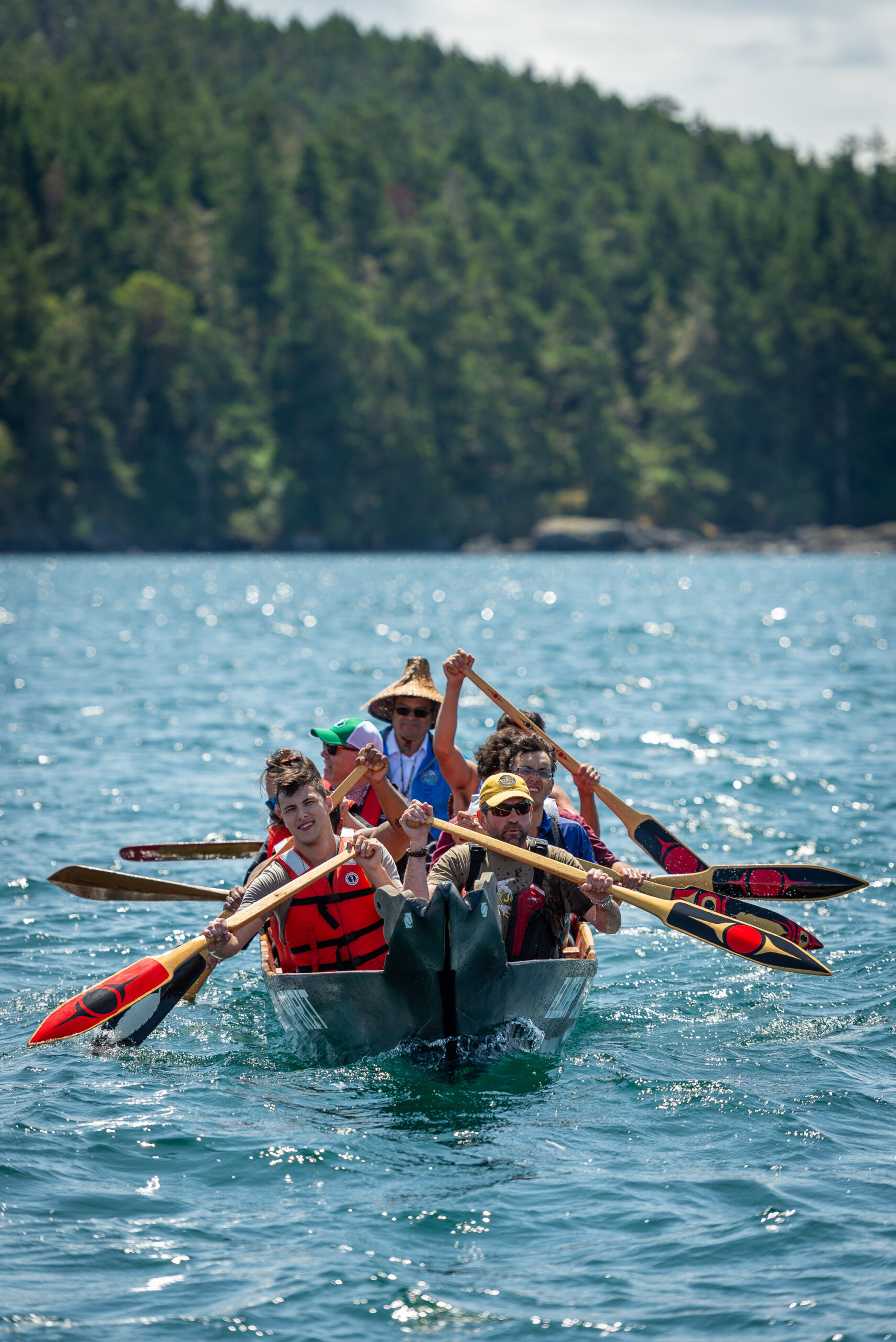Module 2: Communication and Collaboration
Review
We recommend that learners complete Module 1: Ethical and Legal Considerations before starting this module. Keeping Module 1 available for reference while working through this module will also be helpful.

We are all on this journey together. We must learn to communicate and collaborate in a purposeful way to move forward.
Module description
This module will assist learners in understanding that a digital citizen will be able to use digital communication to collaborate with Indigenous Peoples. A digital citizen will understand that communication and collaboration with Indigenous Peoples will bring different ways of communicating and participating based on history, cultural values, and lived experiences.
Learning outcomes
Successful learners will gain an appreciation of communication and collaboration by:
- Understanding that history, cultural values, and lived experiences may lead to different ways of communicating and collaborating in online spaces.
Self-Assessment #1
 Take a few minutes to think about what comes to mind when you hear the words “communication” and “community collaboration in digital literacy.” What does communication and community collaboration in Indigenous digital literacy mean to you? What is the first answer that comes to mind? Be sure to write down that answer. Feel free to brainstorm words, images, and emotions that come to mind when you think of communication and community collaboration.
Take a few minutes to think about what comes to mind when you hear the words “communication” and “community collaboration in digital literacy.” What does communication and community collaboration in Indigenous digital literacy mean to you? What is the first answer that comes to mind? Be sure to write down that answer. Feel free to brainstorm words, images, and emotions that come to mind when you think of communication and community collaboration.
Record your response in your Toolkit.
Self-Assessment #2
 As you do this self-check, reflect on your communication and collaboration with Indigenous students and respond honestly. This is only for your eyes. We do not expect you to be an expert at the beginning of this journey. You will have a chance to do a post-assessment at the end of the module to see how you have expanded your knowledge and beliefs.
As you do this self-check, reflect on your communication and collaboration with Indigenous students and respond honestly. This is only for your eyes. We do not expect you to be an expert at the beginning of this journey. You will have a chance to do a post-assessment at the end of the module to see how you have expanded your knowledge and beliefs.
Consider each of the following statements and reflect on whether they are true for you and your experience as an instructor:
- I understand that the impact of Residential Schools is ongoing.
- I recognize that all Indigenous Peoples do not share a common culture.
- I create a culturally inclusive environment for Indigenous students in my classroom.
- I understand and implement the concept of strength-based language.
- I recognize trauma responses in my students and understand a trauma-informed approach. I understand and carry out Indigenous communication protocols.
- I avoid triggering language.
Record your responses in your Toolkit.
Learner notes
Sources and recommended readings: Indigenous Cultural Competency Self-Assessment Checklist (ictinc.ca) and 15 Strategies for Teachers of Indigenous Students (ictinc.ca)
Attributions
- “Premier John Horgan joins Tribal Canoe Journeys 2019” by the Province of British Columbia is licensed under a CC BY-ND 2.0 licence.

